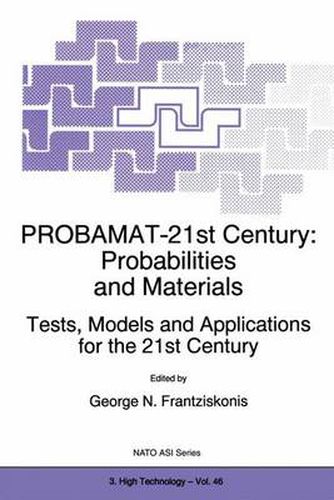Readings Newsletter
Become a Readings Member to make your shopping experience even easier.
Sign in or sign up for free!
You’re not far away from qualifying for FREE standard shipping within Australia
You’ve qualified for FREE standard shipping within Australia
The cart is loading…






This title is printed to order. This book may have been self-published. If so, we cannot guarantee the quality of the content. In the main most books will have gone through the editing process however some may not. We therefore suggest that you be aware of this before ordering this book. If in doubt check either the author or publisher’s details as we are unable to accept any returns unless they are faulty. Please contact us if you have any questions.
There are numerous technological materials - such as metals, polymers, ceramics, concrete, and many others - that vary in properties and serviceability. However, the almost universal common theme to most real materials is that their properties depend on the scale at which the analysis or observation takes place and at each scale probabilities play an important role. Here the word probabilities is used in a wider than the classical sense. In order to increase the efficiency and serviceability of these materials, researchers from NATO, CP and other countries were brought together to exchange knowledge and develop avenues for progress and applications in the st 21 century. The workshop began by reviewing progress in the subject area over the past few years and by identifying key questions that remain open. One point was how to observe/measure material properties at different scales and whether a probabilistic approach, at each scale, was always applicable and advantageous. The wide range of materials, from wood to advanced metals and from concrete to complex advanced composites, and the diversity of applications, e.g. fatigue, fracture, deformation, etc., were recognized as obstacles in identifying a universal approach.
$9.00 standard shipping within Australia
FREE standard shipping within Australia for orders over $100.00
Express & International shipping calculated at checkout
This title is printed to order. This book may have been self-published. If so, we cannot guarantee the quality of the content. In the main most books will have gone through the editing process however some may not. We therefore suggest that you be aware of this before ordering this book. If in doubt check either the author or publisher’s details as we are unable to accept any returns unless they are faulty. Please contact us if you have any questions.
There are numerous technological materials - such as metals, polymers, ceramics, concrete, and many others - that vary in properties and serviceability. However, the almost universal common theme to most real materials is that their properties depend on the scale at which the analysis or observation takes place and at each scale probabilities play an important role. Here the word probabilities is used in a wider than the classical sense. In order to increase the efficiency and serviceability of these materials, researchers from NATO, CP and other countries were brought together to exchange knowledge and develop avenues for progress and applications in the st 21 century. The workshop began by reviewing progress in the subject area over the past few years and by identifying key questions that remain open. One point was how to observe/measure material properties at different scales and whether a probabilistic approach, at each scale, was always applicable and advantageous. The wide range of materials, from wood to advanced metals and from concrete to complex advanced composites, and the diversity of applications, e.g. fatigue, fracture, deformation, etc., were recognized as obstacles in identifying a universal approach.